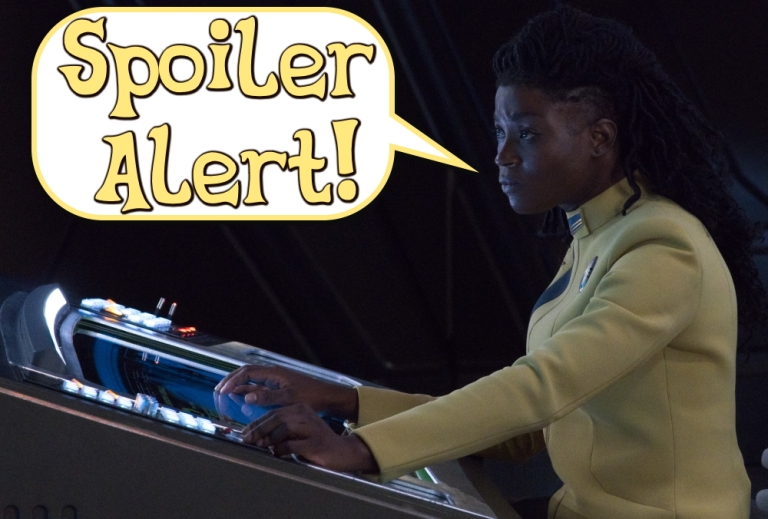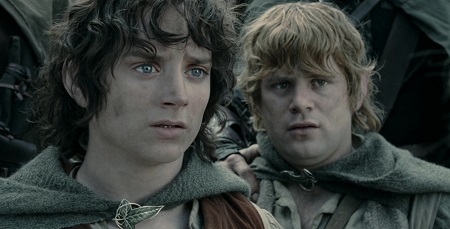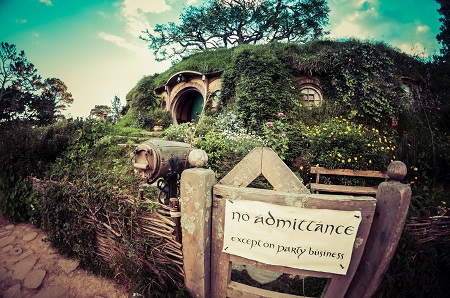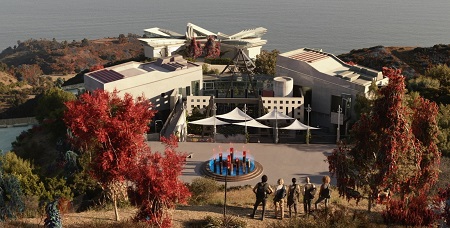
Spoiler Warning: There are spoilers ahead for Star Trek: Picard Season 1.
After a short pandemic-enforced break, Star Trek: Picard Season 3 resumed filming a few days ago. Production on the show’s third season has been underway for a while, and was officially announced back in September during the franchise’s Star Trek Day digital event. The interesting thing about Picard Season 3 being so far along in its production is, of course, that Season 2 has yet to be broadcast. This got me thinking about some of the benefits and potential pitfalls of filming back-to-back in this fashion, and that’s what we’re going to talk about today.
There are some great examples of productions that were filmed back-to-back. The Lord of the Rings trilogy of films has to be one of the best examples of this: all three films were shot together in New Zealand, though post-production work and editing continued after the first and second films had premiered. The Lord of the Rings is held in very high esteem even twenty years after it premiered, and is rightly credited with bringing the high fantasy genre to mainstream audiences, paving the way for titles like Game of Thrones.

Being shot back-to-back worked well for The Lord of the Rings then, clearly! The Return of the King – the third and final part of the trilogy – swept the board at the Academy Awards in 2004, picking up a record-equalling eleven Oscars.
In the case of The Lord of the Rings, the practicalities of production meant that shooting all three films together made sense. New Line Cinema had greenlit the entire trilogy and was expecting it to be a success, and the difficulties of setting up production in New Zealand – as well as having the actors travel there – all came together to make filming the entire project at once a practical and sensible approach to production. From the earliest days of pre-production, New Line Cinema intended to do things this way.
Whether in cinema or on television, there are advantages to filming back-to-back. There’s far less of a chance that characters will look noticeably different from one part of the story to the next, for example, as everything from costuming to makeup and even haircuts or simply ageing will not be factors that impact production. Keeping the same behind-the-camera crew will also allow for a consistent production that keeps the same cinematographic style. It makes it easier to go back and re-work parts of the story, if necessary – for example, if a writer or director felt the need to add a scene foreshadowing the ending, or even to change the entire end of the story to better fit what had come before.

But there can be drawbacks to this approach, pitfalls that can be very difficult to avoid even with good preparation and the best of intentions. And there’s one reason in particular why Star Trek: Picard kicked off this discussion for me.
Star Trek: Picard started with an episode that’s probably the best series premiere in the history of the franchise, surpassing even Deep Space Nine’s Emissary – the previous high-water mark. Over the course of the next few episodes, its story unfolded slowly and seemed to be building up to an exciting climax. Unfortunately, though, the season stumbled as it approached the finish line, with the first half of its two-part finale in particular being a real disappointment. The way the season eventually ended left several storylines unresolved and at least one gaping plot hole. To be blunt, the finale was weak – and it’s important that the writers and producers receive that feedback and take it on board.
I’m not the only person to have criticised the way that Star Trek: Picard Season 1 ended; the two parts of the season finale are the worst-rated episodes of the show according to review aggregator Rotten Tomatoes.

So what’s the point of bringing this up? Well, it’s simple: filming back-to-back, as is now happening with Seasons 2 and 3 of Picard, means that the show’s writers and producers will have far less of a margin for error; they’re much more constrained and less able to make changes based on critiques and audience reactions.
Set aside any thoughts you might have about “artistic integrity” or the “vision” of a production’s writers, producers, and directors. In the real world, with very few exceptions films and television shows are adapted – and in some cases changed entirely – based on the way audiences respond to them. This is why practically every film and television series is shown to test audiences before they premiere. Doing so can give production companies the chance to make last-minute adjustments, make cuts, or even rework entire sequences.
ViacomCBS will not have ignored the reviews and discussion surrounding Picard Season 1 and its finale. Those criticisms will have been absorbed by the corporation, and I wouldn’t be surprised if they mandated changes to the story of Season 2 as a result, even if such changes may be relatively minor. Just to pick on one example, the story of main character Narek, which was dropped without a resolution part-way through the finale, might be something that the team in charge of the show insist that Season 2 clarifies.

But if there are issues with Season 2 – whether they’re to do with story, art style, visual effects, etc. – it will be much harder, and much more expensive, to make any changes to Season 3. In all likelihood, Season 3 will wrap up its main phase of production before Season 2 even premieres, and while post-production work and pick-up shoots offer some opportunities to make changes, those opportunities are limited. If a film or series has been ready to go for a year or more, going back to film extra scenes can be tricky; it can be very easy to tell which scenes and shots were filmed and added in later, even in productions with high budgets.
In short, because Picard Season 1 had some very particular and noteworthy issues with its finale, I’m at least a little concerned about the direction of the series heading into Seasons 2 and 3, and the fact that the seasons are being shot back-to-back heightens that. Had Season 1 ended with a stronger finale, perhaps I’d be less concerned. But unfortunately it didn’t – and that leaves the show in a strange place for me. I’m genuinely excited to spend more time with Admiral Picard and the crew of La Sirena, but I’m at least a little anxious about the way the show’s production is being handled.

In a way, this is something we may have to get used to as the pandemic rumbles on. Had it not been for covid and its associated lockdowns in California, it would’ve been possible for production on Picard Season 2 to get underway far sooner, potentially meaning that there’d have been no need to film the second and third seasons back-to-back. But the pandemic continues to be a disruptive force across the world, so productions may have to get used to working when they can and taking breaks when they must – at least in the short-to-medium term.
In some cases it won’t matter. In others, filming back-to-back can provide significant advantages. But there are potential drawbacks to this way of approaching a major production, not least the difficulty in going back and making changes based on audience and critical feedback. It’s the latter point that concerns me when it comes to Star Trek: Picard, and that’s due to the weak ending to an otherwise excellent first season. Perhaps in the days ahead we should go back to the two parts of Et in Arcadia Ego and re-examine what went wrong – as well as looking at what the season finale got right. If I forget, remind me! For now, you can check out the reviews of both episodes on my dedicated Star Trek: Picard page.
The Lord of the Rings trilogy is the copyright of New Line Cinema and/or Warner Bros. The Star Trek franchise – including Star Trek: Picard – is the copyright of ViacomCBS. This article contains the thoughts and opinions of one person only and is not intended to cause any offence.

